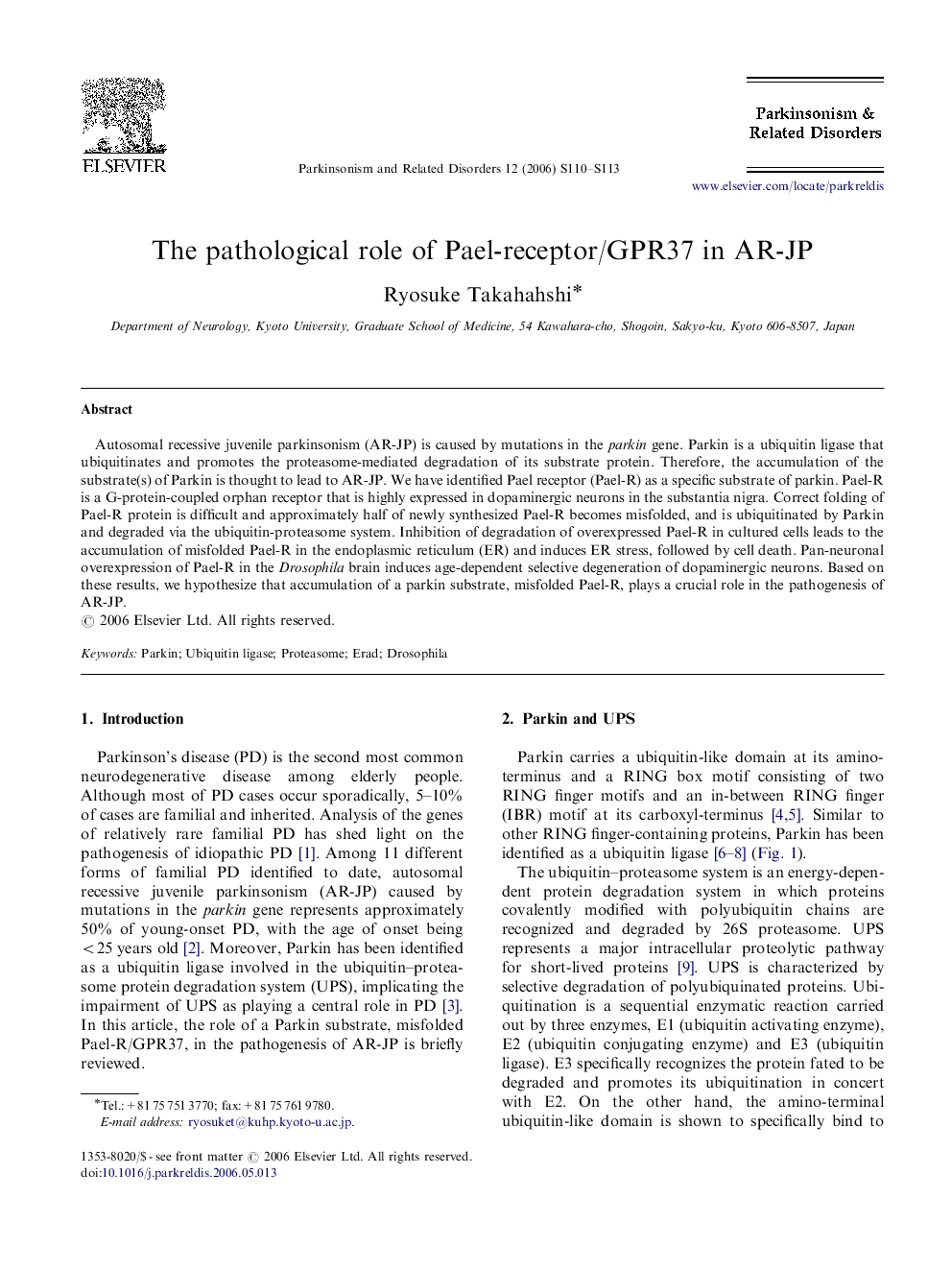| Article ID | Journal | Published Year | Pages | File Type |
|---|---|---|---|---|
| 1922754 | Parkinsonism & Related Disorders | 2006 | 4 Pages |
Abstract
Autosomal recessive juvenile parkinsonism (AR-JP) is caused by mutations in the parkin gene. Parkin is a ubiquitin ligase that ubiquitinates and promotes the proteasome-mediated degradation of its substrate protein. Therefore, the accumulation of the substrate(s) of Parkin is thought to lead to AR-JP. We have identified Pael receptor (Pael-R) as a specific substrate of parkin. Pael-R is a G-protein-coupled orphan receptor that is highly expressed in dopaminergic neurons in the substantia nigra. Correct folding of Pael-R protein is difficult and approximately half of newly synthesized Pael-R becomes misfolded, and is ubiquitinated by Parkin and degraded via the ubiquitin-proteasome system. Inhibition of degradation of overexpressed Pael-R in cultured cells leads to the accumulation of misfolded Pael-R in the endoplasmic reticulum (ER) and induces ER stress, followed by cell death. Pan-neuronal overexpression of Pael-R in the Drosophila brain induces age-dependent selective degeneration of dopaminergic neurons. Based on these results, we hypothesize that accumulation of a parkin substrate, misfolded Pael-R, plays a crucial role in the pathogenesis of AR-JP.
Related Topics
Life Sciences
Biochemistry, Genetics and Molecular Biology
Ageing
Authors
Ryosuke Takahahshi,
